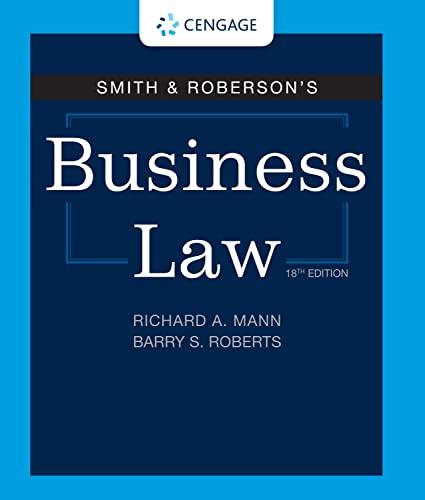Question
Instructions: Read the Federal Court's decision in Elias v (Citizenship and Immigration), 2022 FC 252 (you can find the case on CanLii at www.canlii.org), and
Instructions: Read the Federal Court's decision in Elias v (Citizenship and Immigration), 2022 FC 252 (you can find the case on CanLii at www.canlii.org), and answer the following questions at a maximum of 600 words: 1. Explain, citing the relevant portion(s) of the legislation and what concerns were raised by the IAD regarding Ms. Elias' sponsorship application. 2. Did the Court agree or disagree with the arguments being advanced by the Applicant in that case? Use specific examples from the case in explaining your answer. 3. Find a relevant case that, had you been counsel for the Applicant in Elias, you would have provided in support of the case. Explain its relevance and application. Your analysis should include at least one (1) citation to an IAD/Federal Court decision to support your answer. The citation that you use to support your answer should not be relied on in the reasons set out by the Federal Court in Elias. Assessment: Grading Criteria: 1. Critical Thinking (70%) You will be assessed on critical thinking skills - integrating the information provided in the scenario with your understanding of evidence and admissibility. Specifically, in this case, what evidence should be given more or less weight, and what factors determine the reliability and credibility of the evidence. a) Understanding of Legislation: Accurately explains the relevant legislation. Identifies the concerns raised regarding the Applicant's sponsorship application as outlined in the case. b) Court's Position on Applicant's Arguments: Demonstrates a thorough understanding of the Federal Court's stance on the arguments presented by the Applicant. Provides specific examples from the case to support whether the Court agreed or disagreed with the Applicant's arguments. c) Citation and Analysis of a Relevant Case: Successfully finds a relevant case that could have supported the Applicant. Clearly explains the relevance of the chosen case and how it could have been applied to strengthen the Applicant's case. Demonstrates an understanding of the legal principles and reasoning behind the chosen case. 2. Communication (30%) You will be assessed on the clarity of your writing. a) Use of Citations: Appropriately uses citations to support arguments and points made in the response. Cites IAD/Federal Court decisions to substantiate the analysis, as required in the assignment instructions. b) Clarity and Organization: Presents the analysis in a clear and organized manner, with a logical structure. Uses appropriate headings or subheadings to distinguish different sections of the analysis. c) Grammar and Style: Demonstrates strong writing skills with minimal grammatical errors. Maintains a professional tone and writing style. d) Conclusion and Recommendations: Summarizes the main findings of the analysis. Offers concise recommendations based on the analysis. e) Overall Quality and Originality: Demonstrates creativity and original thought in analyzing the case. Provides a well-reasoned and thorough analysis that is of high quality. f) Accurate Use of Legal Terminology and Abbreviations: Correctly use and apply legal terminology related to immigration law. Explain any abbreviation at the first instance.
Step by Step Solution
There are 3 Steps involved in it
Step: 1

Get Instant Access to Expert-Tailored Solutions
See step-by-step solutions with expert insights and AI powered tools for academic success
Step: 2

Step: 3

Ace Your Homework with AI
Get the answers you need in no time with our AI-driven, step-by-step assistance
Get Started


